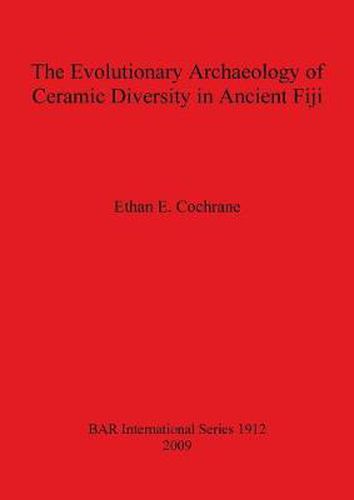Readings Newsletter
Become a Readings Member to make your shopping experience even easier.
Sign in or sign up for free!
You’re not far away from qualifying for FREE standard shipping within Australia
You’ve qualified for FREE standard shipping within Australia
The cart is loading…






This title is printed to order. This book may have been self-published. If so, we cannot guarantee the quality of the content. In the main most books will have gone through the editing process however some may not. We therefore suggest that you be aware of this before ordering this book. If in doubt check either the author or publisher’s details as we are unable to accept any returns unless they are faulty. Please contact us if you have any questions.
The research presented here investigates the evolution of material cultural diversity in the Yasawa Islands in the northwestern corner of the Fijian archipelago. This work builds upon several field seasons of basic research in the Yasawas, as well as other large-scale ceramic analyses in Fiji. This study constructs answers using an explanatory framework explicitly designed to account for the evolution of cultural diversity in prehistory. This explanatory framework combines the effects of cultural transmission, selection and other sorting processes, and innovation. Using this explanatory framework this research attempts to answer the following three questions: 1. What domains of ceramic similarity in the Yasawa Islands can be used to define culturally transmitting populations or lineages; 2. What are the spatial and temporal distributions of transmission lineages defined along different avenues of transmission; and 3. What are the possible explanations for the distribution of these lineages? Chapter 2 examines some of the previous archaeological and other research in Fiji that has attempted to explain or document cultural, biological, and linguistic diversity. Chapter 3 more completely develops the theoretical framework used to explain prehistoric ceramic similarities and difference in terms of transmission lineages. An outline of the natural and cultural history of the Yasawa Islands is presented in Chapter 4. Classifications of ceramic variation and other analyses are presented in Chapter 5. In Chapter 6 cladistic and seriation analyses generate hypotheses for the transmission history of Yasawa Islands populations. Chapter 7 reviews the results of this research in the context of other archaeological work in Fiji. The approach to explaining cultural similarities and differences employed in this research indicates that prehistoric cultural diversity can be examined using cultural transmission, selection, and innovation to produce empirically testable hypotheses regarding the historical relatedness of populations. The further development of this approach by scholars will do much to answer long-standing questions.
$9.00 standard shipping within Australia
FREE standard shipping within Australia for orders over $100.00
Express & International shipping calculated at checkout
This title is printed to order. This book may have been self-published. If so, we cannot guarantee the quality of the content. In the main most books will have gone through the editing process however some may not. We therefore suggest that you be aware of this before ordering this book. If in doubt check either the author or publisher’s details as we are unable to accept any returns unless they are faulty. Please contact us if you have any questions.
The research presented here investigates the evolution of material cultural diversity in the Yasawa Islands in the northwestern corner of the Fijian archipelago. This work builds upon several field seasons of basic research in the Yasawas, as well as other large-scale ceramic analyses in Fiji. This study constructs answers using an explanatory framework explicitly designed to account for the evolution of cultural diversity in prehistory. This explanatory framework combines the effects of cultural transmission, selection and other sorting processes, and innovation. Using this explanatory framework this research attempts to answer the following three questions: 1. What domains of ceramic similarity in the Yasawa Islands can be used to define culturally transmitting populations or lineages; 2. What are the spatial and temporal distributions of transmission lineages defined along different avenues of transmission; and 3. What are the possible explanations for the distribution of these lineages? Chapter 2 examines some of the previous archaeological and other research in Fiji that has attempted to explain or document cultural, biological, and linguistic diversity. Chapter 3 more completely develops the theoretical framework used to explain prehistoric ceramic similarities and difference in terms of transmission lineages. An outline of the natural and cultural history of the Yasawa Islands is presented in Chapter 4. Classifications of ceramic variation and other analyses are presented in Chapter 5. In Chapter 6 cladistic and seriation analyses generate hypotheses for the transmission history of Yasawa Islands populations. Chapter 7 reviews the results of this research in the context of other archaeological work in Fiji. The approach to explaining cultural similarities and differences employed in this research indicates that prehistoric cultural diversity can be examined using cultural transmission, selection, and innovation to produce empirically testable hypotheses regarding the historical relatedness of populations. The further development of this approach by scholars will do much to answer long-standing questions.